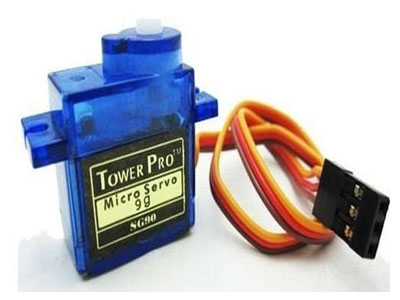Key Takeaway
The speed of a servo motor refers to how quickly the motor’s shaft can reach a specified position, usually measured in seconds per 60 degrees. This speed varies depending on the motor type and its specific application. For instance, common servo motors have speed ratings ranging from 0.05 to 0.2 seconds per 60 degrees.
Factors like the voltage supplied to the motor, the load it’s driving, and the motor’s design significantly influence its speed. Faster motors are ideal for applications requiring quick movements, such as in robotics, while slower speeds may be suitable for tasks needing precision and control.
Factors That Determine Servo Motor Speed
Servo motor speed is influenced by a variety of factors, each playing a crucial role in determining how fast the motor can operate. One of the primary factors is the design of the motor itself, including the type of winding, the number of poles, and the overall construction. These elements dictate the motor’s inherent capabilities and limitations. Another significant factor is the input voltage supplied to the motor. Generally, a higher voltage allows the motor to achieve higher speeds, but this must be carefully managed to avoid damaging the motor or reducing its lifespan. Additionally, the load connected to the motor impacts speed; a heavier load will naturally slow the motor down as it requires more torque to move. Environmental conditions, such as temperature and humidity, can also affect performance, as extreme conditions might cause the motor to overheat or behave unpredictably.

Understanding Speed Ratings in Servo Motors
Speed ratings in servo motors are typically expressed in terms of revolutions per minute (RPM). These ratings indicate the maximum speed the motor can achieve under ideal conditions, without any load. It’s important to understand that these ratings are theoretical limits and that actual operating speeds may vary based on the application. For instance, when a servo motor is used in a precision application, such as in robotics or CNC machines, the speed might need to be adjusted to ensure accuracy and prevent errors. Manufacturers often provide detailed specifications, including both the no-load speed and the rated speed under typical operating conditions, which helps engineers determine the most appropriate motor for their needs. Understanding these ratings is essential for selecting the right servo motor and ensuring it performs as expected in the intended application.
How Speed Affects Servo Motor Performance
Speed is a critical factor in the overall performance of a servo motor. Higher speeds allow for quicker movements, which is essential in applications requiring rapid response times, such as in industrial automation or robotics. However, there is a trade-off: as speed increases, the motor may produce less torque, which can limit its effectiveness in tasks that require high force. Additionally, operating at high speeds for extended periods can lead to increased wear and tear, potentially reducing the motor’s lifespan. On the other hand, operating at lower speeds can improve the motor’s precision and stability, making it ideal for applications where accuracy is more important than speed. Engineers must carefully balance speed and torque requirements based on the specific needs of their application to ensure optimal motor performance.
Typical Speed Ranges for Various Servo Motors
Servo motors come in a wide range of speed ratings, tailored to different applications. Small, hobby-grade servo motors, often used in radio-controlled models, typically operate at speeds of around 100 to 300 RPM. These motors are designed for lightweight applications where speed is more critical than power. On the other hand, industrial servo motors, used in machinery and automation systems, can reach speeds of up to 3000 RPM or more, depending on the specific design and application. These higher speeds are necessary for tasks that require rapid movement, such as packaging, sorting, or assembly processes. It’s important to note that within each category, there is a range of speeds available, allowing engineers to select a motor that best fits their specific requirements.
Methods to Adjust and Control Servo Motor Speed
There are several methods to adjust and control the speed of a servo motor, depending on the level of precision required. One common method is using a variable frequency drive (VFD), which adjusts the input voltage and frequency to control the motor speed. This method is particularly effective for applications where smooth and gradual speed changes are necessary. Another method involves using pulse-width modulation (PWM) signals, which control the duration of the electrical pulses sent to the motor. By adjusting the pulse width, the motor’s speed can be finely tuned. Additionally, feedback mechanisms such as encoders can be used to monitor the motor’s speed in real-time, allowing for dynamic adjustments to maintain the desired performance. These methods enable precise control over motor speed, which is crucial in applications requiring high accuracy and reliability.
Conclusion
Understanding the speed of a servo motor is essential for designing systems that meet specific performance requirements. Speed impacts everything from the motor’s efficiency to its ability to handle different loads, making it a critical factor in many industrial and consumer applications. By carefully considering factors such as motor design, load, and environmental conditions, engineers can select the right servo motor for their needs and ensure it operates at the optimal speed for the task at hand. Whether it’s adjusting speed using advanced control methods or selecting a motor with the appropriate speed rating, the importance of speed in servo motor applications cannot be overstated. For those entering the field, mastering this aspect of servo motor performance is key to successful system design and operation.
